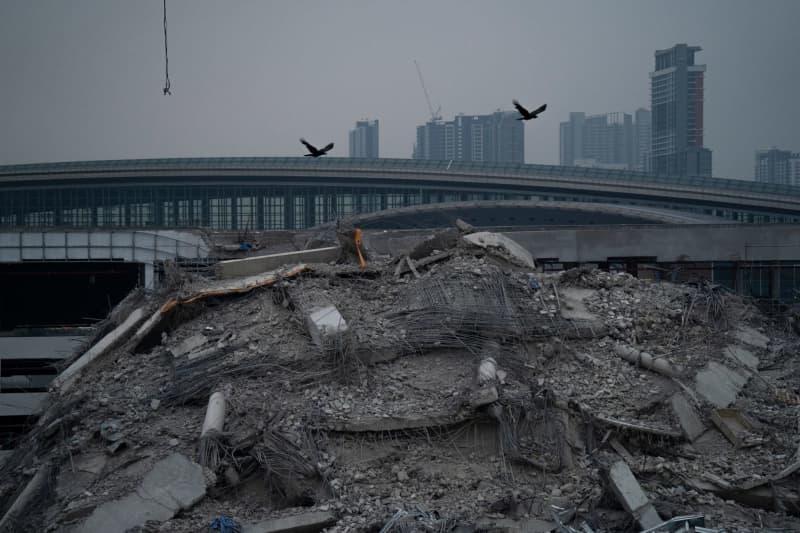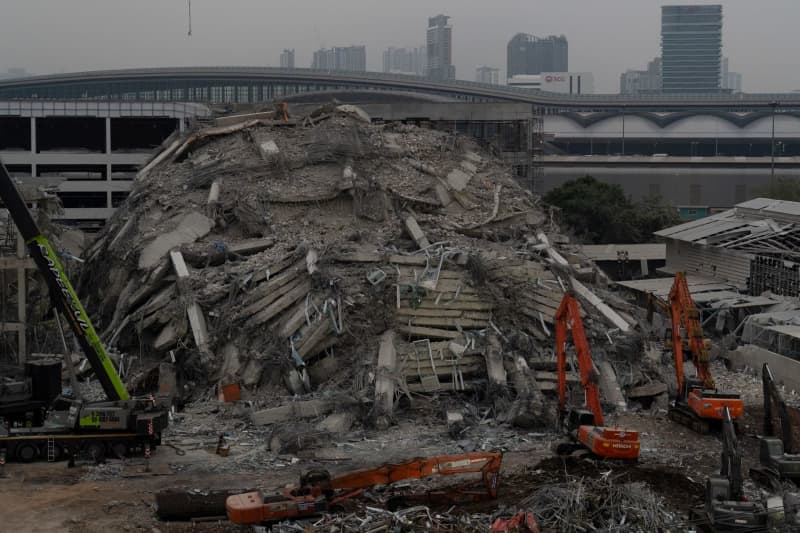Decades – and possibly two centuries – of subterranean tension preceded the powerful earthquake that struck South-East Asia last Friday, German geophysics professor Martin Käser told dpa.
On Tuesday, the ruling military junta reported that the death toll has reached at least 2,719, with more than 4,500 injured and hundreds still missing.
The quake’s ability to bring down a Bangkok high-rise more than 1,000 kilometres from its epicentre in Myanmar is likely attributed to the soft clay on which the Thai capital is built, according to Käeser, who heads the geophysical risk department for Munich Re reinsurers.
The quake occurred along the most prominent fault line in Myanmar, the Sagaing Fault.
“This fault runs through the entire country in a north-south direction. The magnitude at 7.7 was one of the highest ever recorded in Myanmar,” he said.
The Indian plate in the west and the Eurasian plate in the east collide here. According to Käser, they move past each other horizontally, the eastern part from north to south and the western in the opposite direction.
“These plates move past each other at a constant rate of around 2 centimetres per year,” Käser said. “The tension that had built up between these two plates was unleashed at one stroke by the large quake,” he said.
The displacement came to around 5 or 6 metres “depending on the precise point one considers,” the professor at Munich’s Ludwig Maximilian University said. “It could be that tension built up there for as much as 200 years,” he added.
The rupture started near Mandalay in the centre of Myanmar, spreading largely southwards. This meant that the movement of the earth in the south was considerably greater than that in the north.
Bangkok lies in this direction more than 1,000 kilometres from Mandalay. A second factor behind the collapse of the building according to the geophysicist is that the Thai capital is built on extremely loose soil.
The Chao Phraya River has deposited sediment reaching several hundred metres in thickness over millennia, according to Käser.
“And when this mass begins to oscillate, the amplitude of the soil movement increases. And this presumably led to the fact that Bangkok has also recorded severe damage,” he said.
Low-frequency waves with an oscillation period of between 1 and 2 seconds spread considerably further than high-frequency oscillations, he says.
“When these low-frequency waves run into loose material as in Bangkok, there will be strong oscillations even at distances of up to 1,000 kilometres.”
A rescuer abseils onto the higher levels of the wreckage to search for people trapped, following earthquakes that struck neighbouring country Myanmar. Rescuers found no survivors in the basement of a collapsed Bangkok building as the critical 72-hour rescue window nears its deadline. Families wait anxiously for news of missing loved ones. Seksan Rochanametakul/SOPA Images via ZUMA Press Wire/dpa

Birds fly over the site of a building that collapsed following an earthquake as the search for the missing continues in Bangkok. Rescuers found no survivors in the basement of a collapsed Bangkok building as the critical 72-hour rescue window nears its deadline. Families wait anxiously for news of missing loved ones. Seksan Rochanametakul/SOPA Images via ZUMA Press Wire/dpa
Read the full article here


